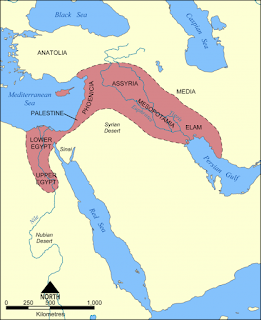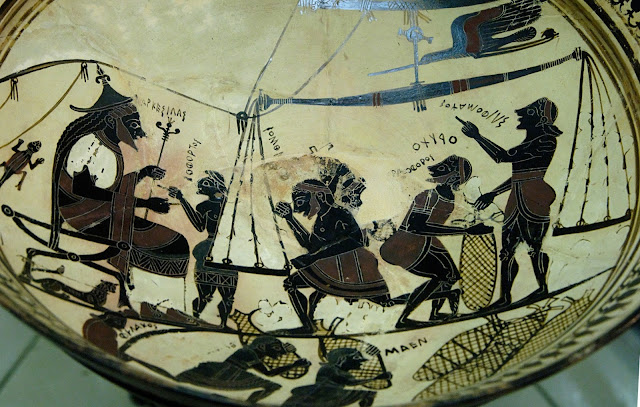For years, cat lovers and scientists have believed that cats
were first domesticated in ancient Egypt. You may already know this story: The
Egyptians began farming and storing grain, which attracted rodents, which
attracted the local wildcats, which started hanging around human settlements.
Humans encouraged the cats to stick around and eventually made pets of them.
The Egyptians went further than that though, believing that the goddess Bastet
could take the form of a cat. From Egypt, domestic cats spread to the rest of
the world.
But is the traditional story of cat domestication correct?
Well, according to the latest study of cat domestication and
dispersal, that original story may be partially correct, but the true picture
is more complicated—and more interesting—than that simple tale. This post
provides seven brief highlights from the study,[1]
which analyzed DNA from ancient and modern cats across a wide temporal and
geographic distance. The DNA used for analysis came from Europe, north and east
Africa, and southwest Asia, and the time period covered was from about 7000 BC
to the present. DNA from 352 ancient cats was analyzed, and modern wildcat DNA
was sampled from 28 cats from Bulgaria and east Africa.
What did the researchers find? Here are our chosen tidbits,
in roughly chronological order:
1. Cats were first domesticated in the ancient Near East.
You’ve heard of Mesopotamia, the Fertile Crescent, where
farming began? Well, according to the DNA analysis by Ottoni and colleagues, that
area of southwest Asia is also where domestic cats began sometime in the
Neolithic period (8,000 years ago, give or take). Think modern Israel, Lebanon,
Syria, Turkey, Jordan, Iraq, Iran. Some of the local wildcats, Felis silvestris lybica, were attracted to the rodents that were attracted to the
humans’ stored grain. Eventually, some of those cats were tamed and
domesticated.
2. Humans probably began transporting cats from place to place in prehistoric times.
Cats from the Near East may have arrived in southeast Europe
by 4400 BC or thereabouts. Some of today’s domestic cats have DNA that came
from these Near Eastern cats.
3. There is some evidence to suggest that domesticated cats in Egypt came from southwest Asia.
The idea that the Egyptians got their first cats from the
Near East has been suggested before. Now there is evidence (in DNA from ancient
cat remains found at a Roman-Egyptian port on the Red Sea and from one Egyptian
cat mummy) that this may indeed have happened.
 |
| Detail from a painting in the Tomb of Nebamun, ca. 1350 BC, Thebes, Egypt. Public domain image, via Wikimedia Commons. |
4. Egyptian cats seem to have become very popular, and this study provides “the first evidence for an African origin for one of the mitochondrial lineages of present-day domestic cats.”
It could be that the Egyptians developed a closer
relationship with their cats, leading to cats that were tamer than their Near
Eastern cousins. That cat napping on your couch could be descended from one of
those Egyptian cats.
5. Humans spread cats throughout the eastern Mediterranean during Classical times.
We’re talking about the time of ancient Greece and Rome.
Cats became popular across a wider area during this period, and they were
recognized as being able to control rodent populations on ships, so the felines
really started to get around. By the 6th century BC, cats were showing up on
Greek pottery and coins and on a piece of pottery found at the Etruscan site of
Vulci (in modern Italy).
6. Cats were further spread during Medieval times, when ships’ cats went along with humans who were traveling for trade or war.
Some evidence comes from a 7th-century cat found at a Viking
port on the Baltic Sea and an 8th-century cat found at an Iranian port. There
was also trade in pelts of domestic cats, and this too may also have encouraged
cats’ spread.
7. Cats probably lived alongside humans for thousands of years before humans began breeding then for specific physical appearances.
Conclusion
We have been waiting for a study exactly like this--one that answers so many of our questions about where domestic cats actually come from. Next up on our wish list of cat research would be a study of early cats from farther east (India, China, and so on). We don't know if anyone is working on this, but we do hope so.
[1] Ottoni
et al. “The Paleogenetics of Cat Dispersal in the Ancient World.” Nature Ecology & Evolution 1, 0139
(2017).



Cats have domesticated us well.
ReplyDeleteVery interesting. I don't like the part about trading cat pelts though.:(
ReplyDeleteOne glimpse of kittens, and humans were enslaved forever!
ReplyDeleteThat's cool. You learn something new every day.
ReplyDeleteThis is so interesting. I love knowing that cats have been around plotting their world domination for such a long time :)
ReplyDeleteI find history fascinating, and history about cats even more so! This was very interesting, thanks for sharing!
ReplyDelete